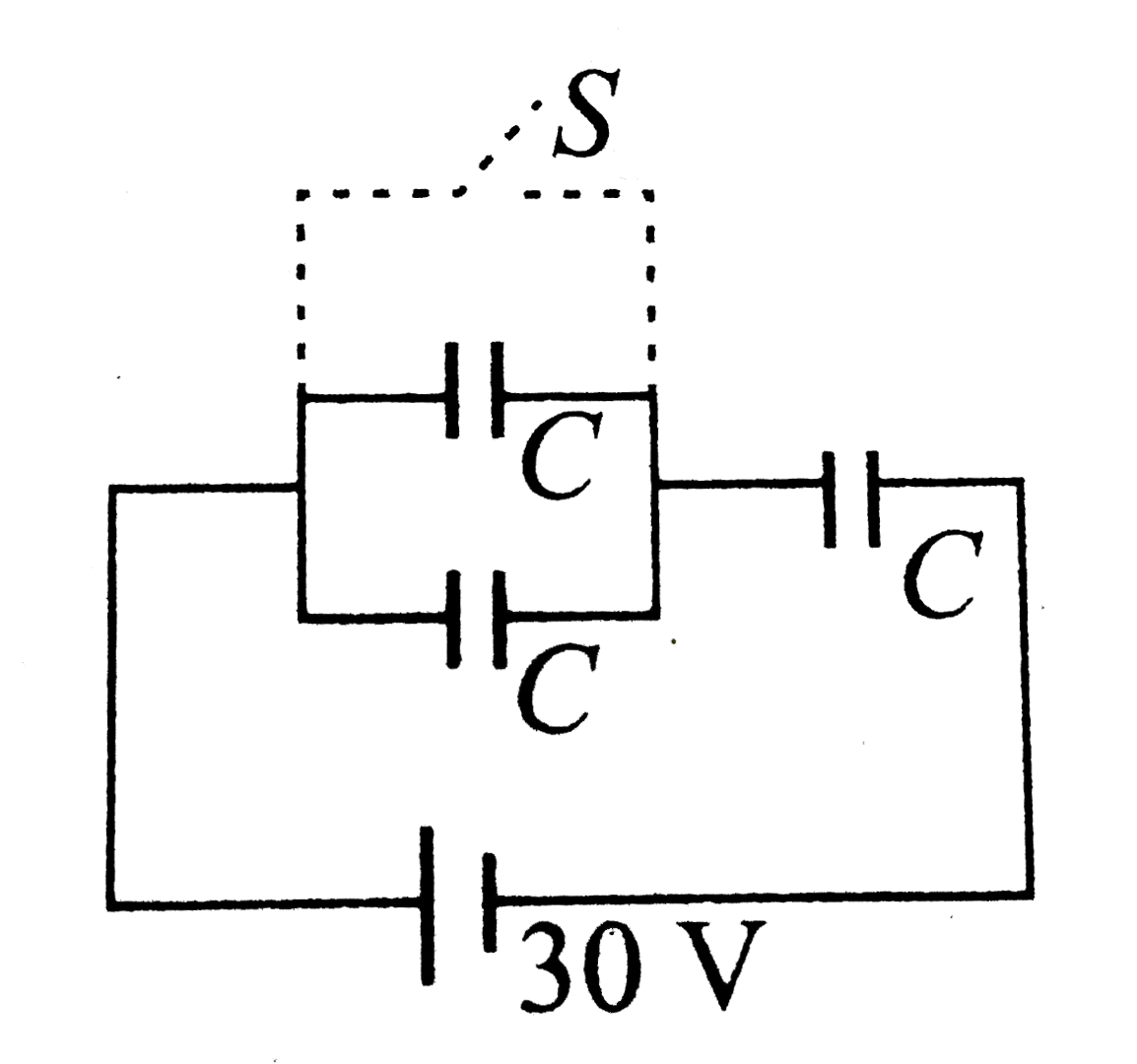How much energy is given to each coulomb of charge passing through a 6V battery ?
60 J
10 J
12 J
6 J
The correct Answer is:D
W=QV=1C×6V=6J.
Topper's Solved these Questions
- ELECTRICITYBOOK - PRADEEPCHAPTER - ELECTRICITYEXERCISE - NCERT Exercise
18 Videos
- ELECTRICITYBOOK - PRADEEPCHAPTER - ELECTRICITYEXERCISE - (Exemplar)Short Answer
10 Videos
- ELECTRICITYBOOK - PRADEEPCHAPTER - ELECTRICITYEXERCISE - (Mock Test)Sec - B
6 Videos
- MAGNETIC EFFECTS OF ELECTRIC CURRENTBOOK - PRADEEPCHAPTER - MAGNETIC EFFECTS OF ELECTRIC CURRENTEXERCISE - Mock Test
21 Videos
Similar Questions
How much energy is given to each coulomb of charge passing through a 6V battery?
View SolutionEach of the uncharged capacitors in Fig 25-34 has a capacitance of 25.0μF. A potential difference of V=750 V is established when the switch is closed . How many coulombs of charge then pass through meter A?

View Solution
Knowledge Check
How many atoms of hydrogen are liberated at cathode , when 965 coulombs of charge is passed through water ?
A6.02×1021B6.02×1023C6.02×10−19D6.02×1019A battery of 10V is connected to a resistance of 20Ω through a variable resistance R. If the variable resistance R is increased at the rate of 5Ω min−1, then the amount of charge that passes through the battery in 4 min is
A120CB120loge(2)CC120loge(2)CD60loge(2)CIn the given figure, the current through the 20 V battery is
 A11AB12AC7AD14A
A11AB12AC7AD14A
How much energy is obrained through carbohyrates?
View Solution(a) Name a device that helps to measure the potential difference across a conductor.
(b) How much energy is transferred by 12 V power supply to each coulomb of charge which it moves around a circuit?
View SolutionHow much time is required for 10 Coulombs of charge to flow past a point if the current is 2 amperes?
View SolutionHow much time is required for 10 Coulombs of charge to flow past a point if the current is 2 amperes?
View SolutionThree capacitors each having capacitance C=2μF are connected with a battery of emf30V as shown in. when the switch S is closed, find
a. the amount of charge flowing through the battery ,
b. the heat generated in the circuit,
c. the energy supplied by the battery,
d. the amount of charge flowing through the switch S.
 .
.
View Solution
